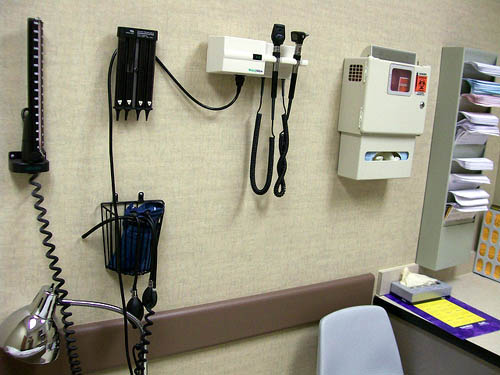JUNIOR hospital doctors are expected to care for up to 124 patients each during nightshifts, according to new figures.
A total of six Scottish hospitals require junior medics – some in their first year on the wards – to cover at least 100 beds.
Experts said young doctors could be “stretched” even further if staff were off work.

The Royal Alexandra Hospital, Paisley, Renfrewshire, requires junior doctors to cover 124 beds on nightshifts.
The Western General in Edinburgh had a ratio of one doctor to 116 beds at the weekend.
Inverclyde Royal, Greenock, Crosshouse Hospital, Kilmarnock, and the Victoria Hospital, Kirkcaldy, all had more than 100 beds per doctor, it was revealed yesterday (fri).
The information was released by Scottish health boards, who insisted staffing ratios on nightshifts were safe.
Starting at 8pm or 9pm, medical cover is provided by what is often known as the Hospital at Night (HaN) team.
Last month junior doctors at St John’s Hospital in Livingston, West Lothian, were reported to have described staffing as “unsafe”.
Dr Neil Dewhurst, President of the Royal College of Physicians of Edinburgh, said: “It can be difficult to predict how many of these patients will require urgent treatment during the night, so it is essential to provide sufficient capacity within these rotas to cover both planned and unplanned care.
“The patient-to-doctor ratios reported by some NHS boards would suggest there may not be much capacity within some of these rotas to cover a high level of unplanned care, particularly if these rotas are further stretched by unfilled vacancies or staff absence.”
The figures also reveal that Gartnavel and Drumchapel Hospitals, both in Glasgow, had ratios of one doctor to 116 beds.
Crosshouse had one doctor to 106 beds, the Victoria had one doctor to 103 beds and Inverclyde had one doctor to 105 beds.
Margaret Watt, of the Scotland Patients Association, said: “It’s bad management – it’s totally unacceptable.
“It’s sad for the young doctors, what do they do if they get something they’re not sure about?
“You’re burning out our young doctors before they’re out of university.
“The health boards are guilty, they should be making sure they have enough staff there, they should have four to five years experience.”
“The chief executives and chairs have to be regulated like everyone else.”
NHS Greater Glasgow and Clyde said: “Given these are hospital at night services there is significantly less activity than during the day when patients are awake.
“The composition of each HaN team is not determined solely by the number of beds on a hospital site, but it also takes account of the physical layout of the hospital, and the range and complexity of clinical services provided in each hospital.
“There is close and continual monitoring of each of the HaN teams to ensure that on each individual hospital site the HaN team provides safe and appropriate care.”
Heather Knox, director of acute services for NHS Fife, said: “Our Hospital at Night team model reflects seven years of local development based on tried-and-tested models developed by the Department of Health (England) and nationally supported Scottish developments.
She added that once the skills of nurses with advanced training was factored in, the ratio was the equivalent of having one doctor for every 70 patient beds.

